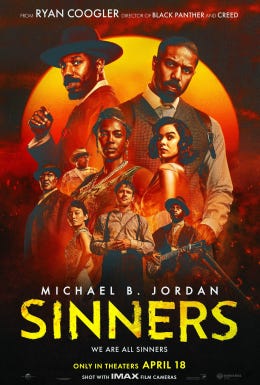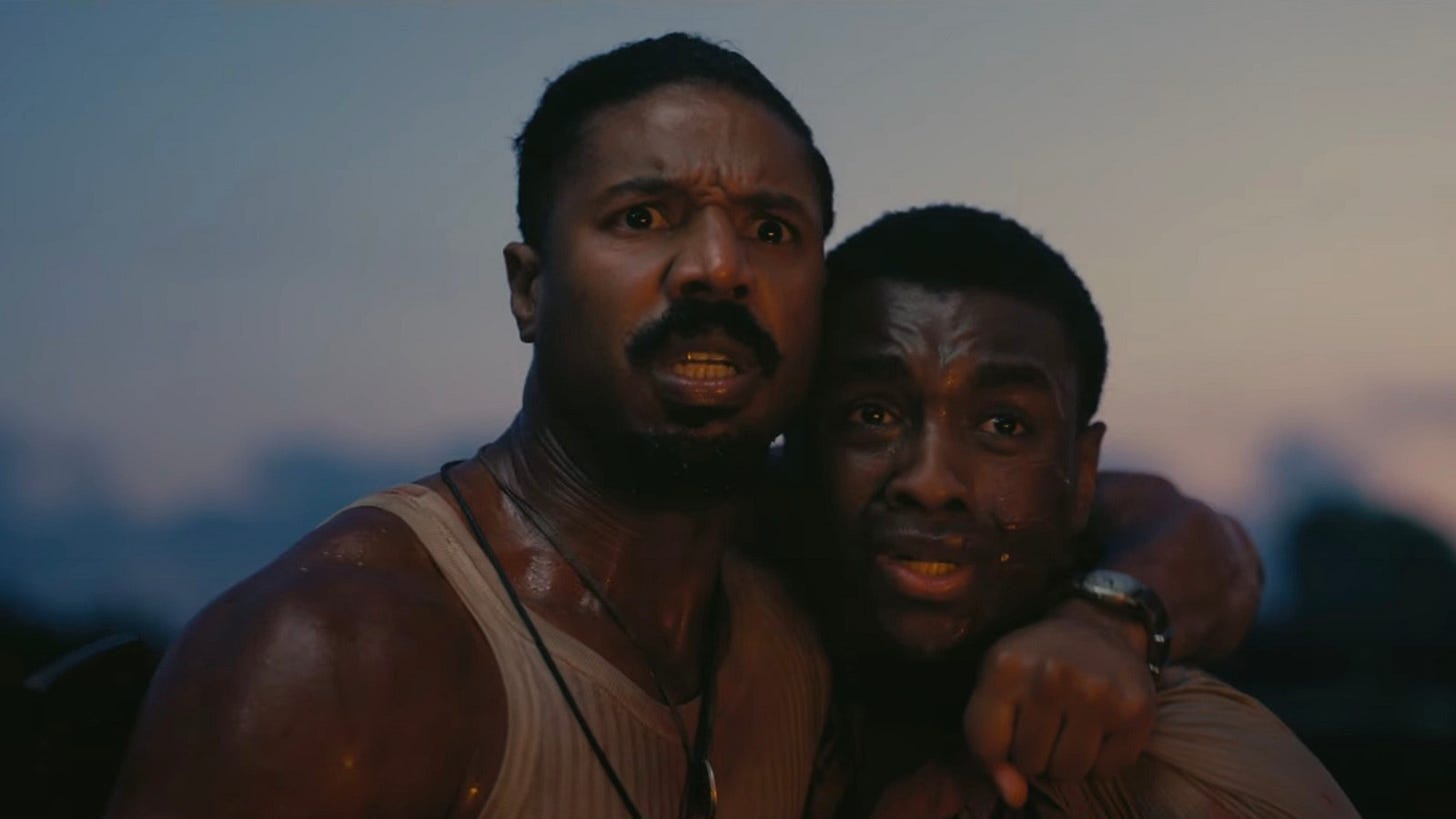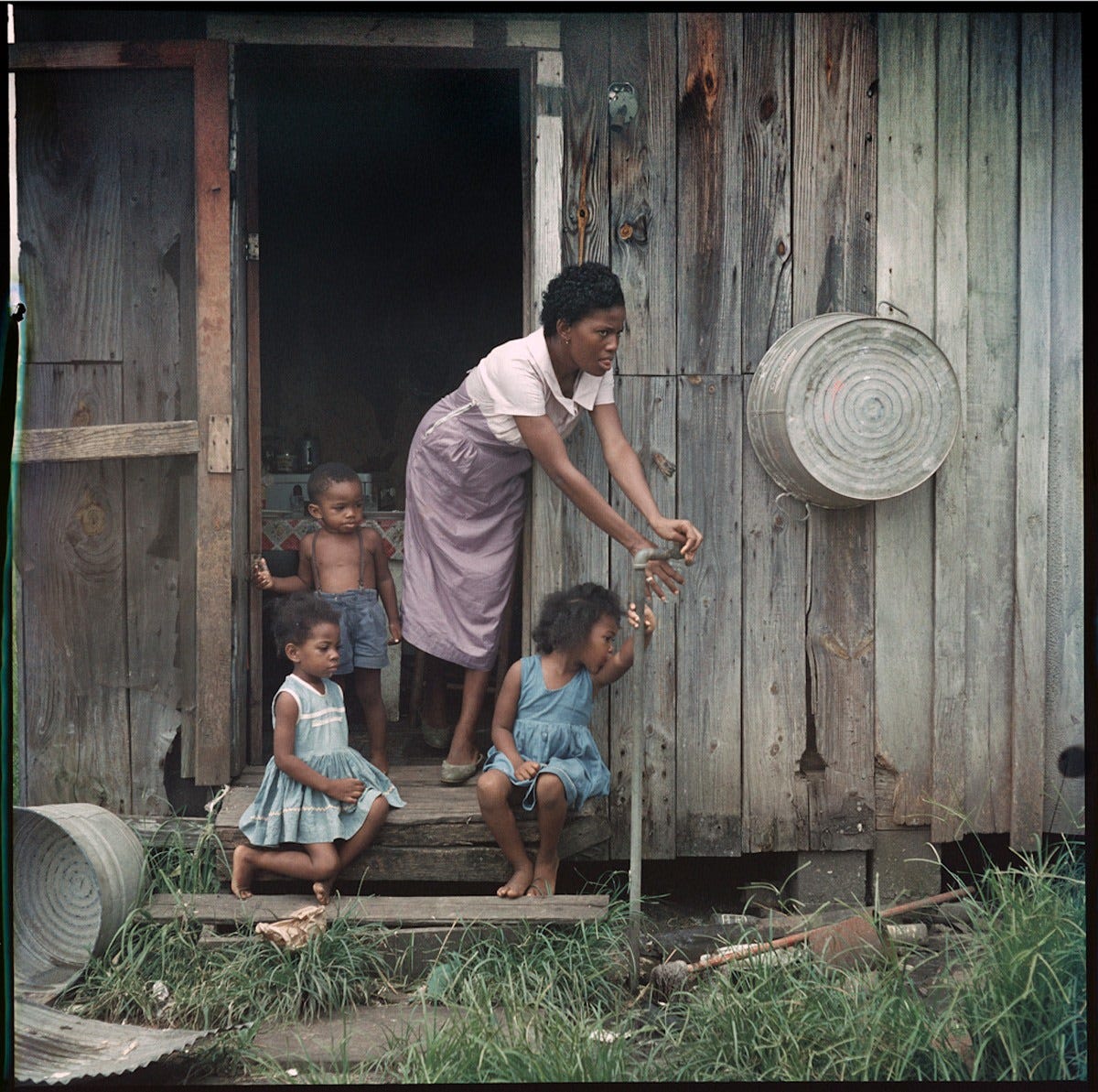SINNERS Review
Ryan Coogler joins the 70mm club but keeps his soul in this evocative Jim Crow vampire fright fest - available in multiple aspect ratios.
Ryan Coogler elevates a monster genre to high art through sheer force of will - and IMAX. Music is the soul of Sinners - both as a coping mechanism for the oppressed to connect to their ancestors and descendants, and an invitation to the Devil in the eyes of the local preacher.
If you had to choose a classic monster to represent the Jim Crow South, you could do much worse than vampire mythology. Coogler spins a compelling vision of the Prohibition era focused on a pair of twins (Smoke and Stack), both played by his longtime collaborator Michael B. Jordan, who have returned from harrowing experiences as soldiers in The Great War and bloodthirsty enforcers for Al Capone’s Chicago. They return to their hometown, Clarksdale, in the Mississippi Delta to open a juke joint with their gangland blood money because they’d rather deal with the Devil they know.
The first Devil they meet, the KKK Grand Dragon, sells them the old saw mill that will become the story's focal point. Remember, like a vampire, a dragon is known for their teeth (and fire). With what’s left of their cash, the twins hire locals and old flames for staff and musicians to play the Blues, including an excellent Delroy Lindo as Delta Slim and newcomer Miles Caton (Sammie Moore), who carries the movie’s heart and burden of the theme. He’s a preacher’s son who plays the blues, representing our duality and inner fight. Will he follow his father’s advice and leave music behind or walk down his own dirt road?
I went to this film without knowing what to expect (like, I didn’t even know it was a vampire movie!), which led to many great surprises along the way. Going in, all I needed to know was that it was an original film by Ryan Coogler and shot on IMAX 70mm film.
I’ll refrain from spoilers and only reference things that I’ve since seen in trailers, but I can’t recommend enough to see films without promotions.
The Aspect Ratio
As I settled into my third row center seat in the Regal RPX theater, I got a little worried - the screen was so large that it escaped my peripheral vision. As the film began, I quickly realized that I could miss the edges since every shot was center-framed. This made the edits easier to follow and helped the filmmakers compose for multiple formats.
Shot in IMAX on 70mm film, the original image is a 15mm side-scrolling full frame square shot with a 1:43 aspect ratio. Since most theaters can’t play that, they also composed for a 2.76:1 and 1.9:1 ratio, depending on where you see it. My screening was in the super-wide ratio, and it looked amazing - simultaneously realistic and fantastical. Shooting with the large format elevates every frame, even if you see it reduced to a “normal” theatrical DCP.
In this age of streaming, I am happy that so many filmmakers are fighting to shoot large format and reward the audience that comes to theaters. We have to keep these cultural places alive, our society has atomized so much and forgotten the thrill of a collective experience.
It’s called “civilization.”
Of course, not everyone is up to speed on the wide assortment of screening formats available to the modern audience. To help alleviate confusion, Kodak partnered with Ryan Coogler to deliver this helpful and illustrative explainer:
The Lighting
I was impressed with the lighting throughout Sinners - it strove for underlit naturalism during the story setup, lighting through windows, letting faces fall into shadow. Shot by Autumn Durald Arkapaw, ASC, the film feels epic in scope but relatable and real. She’s not afraid of underexposure, but frames never feel too heavy or muddy. There’s always some highlight or sparkle to define the intentionality of exposure.
The sun plays a pivotal role in every vampire story, and this one is no different. Almost all the light in the opening section is natural as the twins set up their new joint and gather the townsfolk to party. While the sun shines, they make progress on their plans. The devil is at bay.
At dusk, we see a man perched high on a ladder siphoning off the power wires, sending down a shower of sparks and bathing the juke joint in a warm electrical glow. For the rest of the night, we wait in anticipation for the unravelling. When blood money talks, monsters listen.
The Juke Joint
The juke joint setting is no coincidence- these act as a locus of solidarity and escape from the horrors of white supremacy. Every Black community in the Deep South has (or had) its local watering hole where the alcohol is cheap and the blues are loud. Saturday night is just as sacred as Sunday morning there.
I got a firsthand experience of Willie King’s juke joint working on Martin Scorsese’s PBS project, The Blues. DP Lisa Rinzler and producer Alex Gibney brought me down to Alabama for the shoot. It was one of the most memorable nights of my life - they blew the roof off the joint! Here’s Willie playing in Mississippi (a little more subdued on this track!):
I had been in some rough spots in big cities, but nothing prepared me for the abject poverty I encountered in rural Alabama homesteads. It was like I had walked into a Walker Evans depression-era photograph, but in color.
So a Gordon Parks reference might be more apt. He was so great with color photography, an early adopter when shooting the civil rights era in gritty black and white was seen as more dignified with journalistic integrity. Parks wanted to highlight the beauty, vibrancy, and resiliency of Black communities and emphasize their emotional depth with humanizing portrayals.
The next thing I noticed while working on The Blues - in Alabama, where the Black rural neighborhoods began, the pavement ended. Your tax dollars at work. The year was 2003, but I saw no discernible difference in the production design of Coogler’s 1932 set. The photograph below was taken twenty-four years after the film’s time setting.
And one more for good measure, the title “Outside Looking In” says it all. To think Parks’ local handler had the audacity to tell him that there was not enough segregation in Alabama to merit a Life Magazine story.
Behind the Scenes
I would recommend watching these after you see the movie, but below are some behind the scenes videos that give a sense of the scale of this production. I’m always amazed when I see the IMAX camera on a shoulder or Stedicam rig.
Shout out to the camera operators out there. Keep your shoulders iced!













Great read! I also saw Sinners having seen minimal promotional material and I agree that it enhanced the experience for me altogether. I'm very impressed with Arkapaw's cinematic technique!